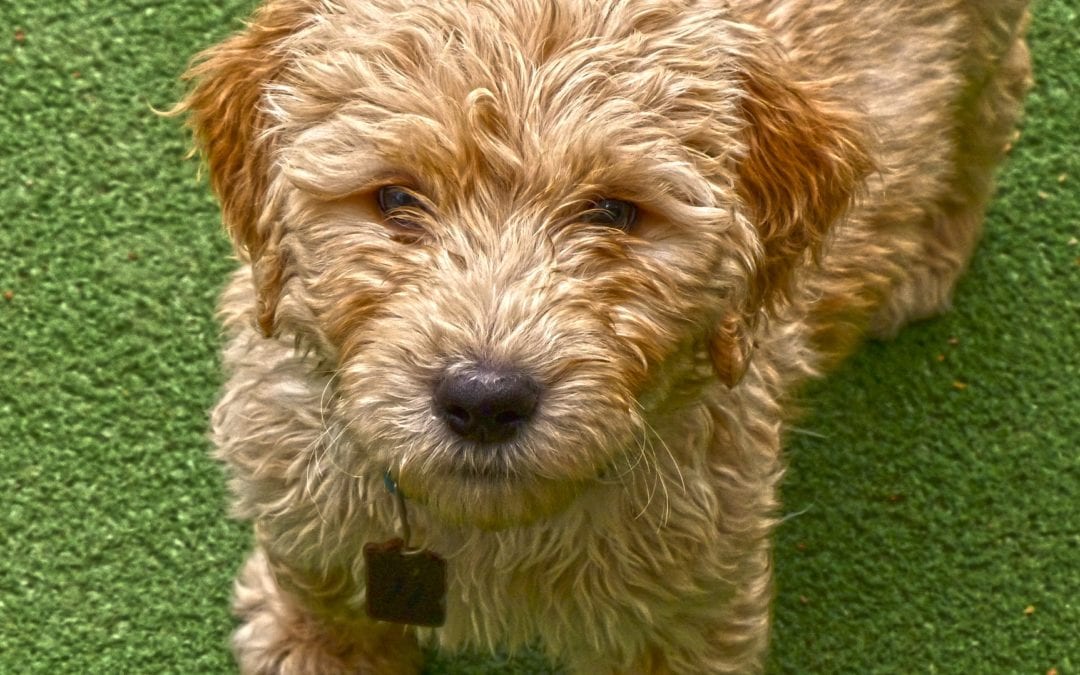COVID has changed the way that pets are worked up now. Clients are in the parking lot, or “curbside,” and communication is challenging. For these gastrointestinal issues, the staff will get a quick history and then come ask about what preliminary workup I want. Then they will discuss the initial workup with the owners and get permission when they pick up the pet.
Derby’s parents approved the CBC (Complete Blood Count), Chemistry (panel for liver, kidney, diabetes, and some heart enzymes), and a pancreatitis test. Derby’s CBC and Chem were not very exciting, but she was pancreatitis positive. The pancreatitis test is not a direct test like a heartworm or parvo test. If you are positive on the heartworm or parvo test, you have those diseases. If your pet is positive for pancreatitis, it means the enzyme level is high, but that could be for a few different reasons, which could include pancreatitis. The real reason for doing the test is that if the test is negative, there is some other disease besides pancreatitis.
Since Derby’s test was positive, it would have been easy to have put her on IV fluids and not worry about anything for a few more days. Pancreatitis has that characteristic hunched posture also. But I thought maybe perhaps I felt something in her abdomen. It was long and thick, and I thought that it might be an entusseption where the intestines telescope into themselves after a long bout of diarrhea. Just to keep my options open, I ordered BIPS or Barium Impregnated Spheres. The ideal use of BIPS is to take radiographs (x-rays) about 18 hours later. The big (3mm) BIPS mimic food as it travels the GI tract. The little BIPS (0.5mm) mimic fluid as it travels the GI tract. If this was not pancreatitis, the next day, we could take rads and see if the BIPS had stopped somewhere along the way.
Friday was cold and icy, and Derby had pooped a small amount, and it was looking more like pancreatitis, but something made me wonder. We took radiographs, but they did not help. There was not a clear blockage, but neither did it fit classic pancreatitis. I then asked for a barium enema. Sometimes a barium enema will fix an entusseption in human children without surgery. That seemed like a good idea.
By the time we got the radiographs from the barium enema, the pattern was looking a lot more like a blockage or foreign body. I tried to call the owners to get permission for surgery: no answer. We called all the numbers listed five times each.
I was taking an investigator class, and we had a mandatory class from 2:00 pm to 5:00 pm. I could not stay late because the house was on a generator, and not only would the house be cold for Matt, but I would have to drive remote icy roads after dark. The ER has been slammed, and there was no guarantee that they could do the surgery or would even be open. Specialists have been overrun and have been turning cases away, even IF the owners could have driven there.
We tried again to call and got no answer. These were new clients, so while I had talked with them on the phone, I hadn’t seen or met them. Rusty had met them curbside and said he thought they would do surgery. I knew I could be in trouble for doing surgery without permission, but Derby could die if I didn’t do surgery.
Long ago, I decided that if I was going to get in trouble, I would get in trouble for doing the best thing for the animal. I anesthetized Derby and got her into surgery. By the time the owners finally called us, I had removed the hard inner core of a golf ball and was closing Derby’s abdomen. Rusty called back on his cell phone, and I told them what I had found during surgery. I explained that we had tried to contact them, but because their options were not good for surgery elsewhere because of the storm that I had decided to do the surgery.
I breathed better when they said they were glad that we had done surgery and they had felt that she had eaten something. I explained that I could have gotten in trouble for not having formal consent for surgery. It is said that because of social media and board complaints, the “right” decision may have been one that endangered Derby. These owners were grateful that surgery had been done. I knew that I could have made exactly the same decisions, and other owners could have been very upset.
The next day, Derby was obviously feeling better. She was not as hunched and was more interested in food. After a few days more days in the hospital, she went home to manipulate her owners into extra pets and treats.

